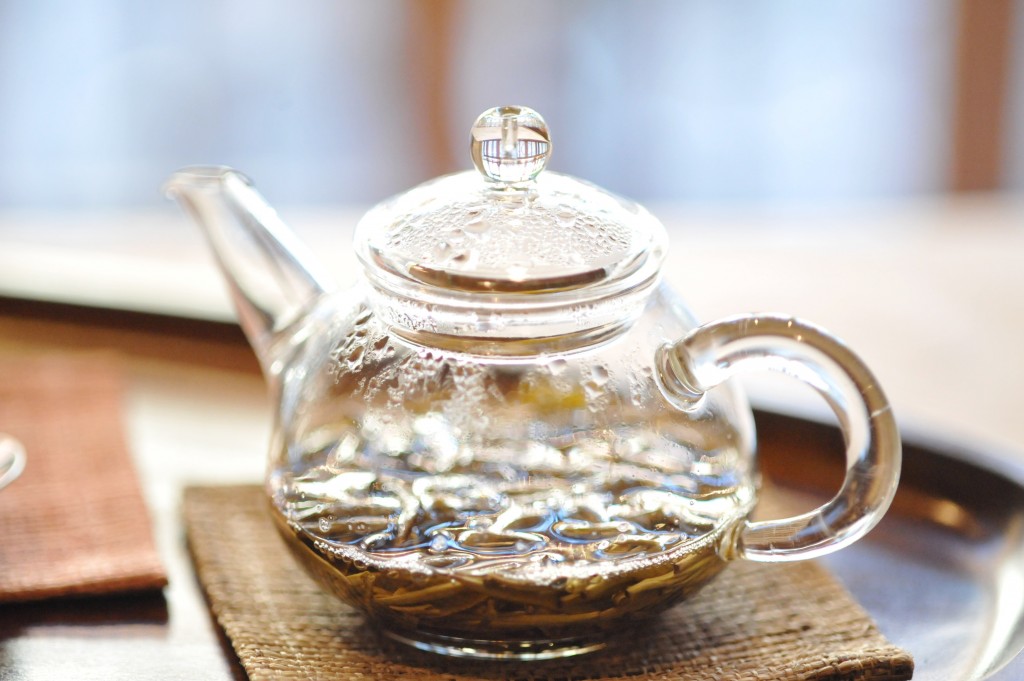
It’s cold now, and the go-to caffeinated hot drink for college students is, of course, coffee. However, too many students ignore the bean-based beverage’s leafy rival: tea.
Some people have the perception that brewing loose-leaf tea is somehow complicated and expensive, requiring esoteric materials and herbal expertise. In fact, it’s remarkably easy and cheap. All you need to brew loose-leaf tea is hot water, a tea kettle or infuser and the tea itself.
Most people first encounter tea through the Lipton bag, a satanic symbol if there ever was one. There are a few good tea bags out there; Lipton does not make any of them. The problem with tea bags is that they’re filled with broken tea leaves, and when tea leaves break, they lose most of their essential oils and aromas. When steeped, broken tea leaves release more tannins, a type of molecule that tastes bitter. Because of this, bagged teas often misrepresent the flavor of full teas, and only with loose-leaf tea can you brew full tea leaves. In fact, bagged tea is usually made from the dust and fannings from tea leaves. In other words: the garbage. If you’re drinking Lipton, you’re literally drinking garbage juice.
Fortunately, Wegmans (where else?) offers a nice selection of loose-leaf teas. In addition to tins of varying sizes from various brands, Wegmans carries bins of store-brand tea of which you can take as much as you’d like, perfect for trying out different flavors — a pinch for one serving, or a whole pouch for a year. If you want to venture beyond the store brands, I recommend Twinings and Harney & Sons. Twinings is great because its leaves seem inexhaustible. You can probably brew at least 10 cups with just a pinch of their Earl Grey; it’s ridiculous. Harney & Sons also excels at the staples and offers other fun flavors as well. (If you’re ever in Manhattan, visit their flagship store in SoHo, where you can sample a wide variety.)
When buying tea, be sure you’re buying tea. I once received a gift of Teavana orange blossom “tea.” Perhaps it does contain rose petals, orange peels and even hibiscus, but none of the listed ingredients are tea. As boiled fruit flower water it tastes wonderful, but not a molecule of Camellia sinensis can be found. Also, don’t buy anything from Teavana. It’s overpriced.
Now that you have your tea, make sure you have access to hot water. I’ll let you figure that one out on your own. I personally use an electric kettle, but I had a neighbor who literally boiled water in a saucepan over his stove and then poured the water into a mug with an infuser inside. He did this for two years. For all I know, he still does it. Whatever floats your boat.
A tea infuser is kind of like a roomy, refillable tea bag. They’re usually made of steel or silicone, and have a perforated compartment that you can open and fill with tea leaves. Once you do that, drop the infuser into a mug and fill it with hot water, then let it steep until it’s as dark as you like it, just as you would with a tea bag.
Lately, I’ve been using my kettle more often because it’s easier to brew multiple cups of tea. (A good kettle or infuser will set you back around $5 to $10, and you can get them on Amazon or at Wegmans, among other usual retailers.) You put in whatever amount of tea you want, and then add hot water. When you pour the tea into your mug, the strainer between the kettle’s body and spout will let the liquid pass through while keeping most of the leaves inside. Make sure you put the tea leaves in first and then pour water over them. If you put the tea leaves on top of hot water, you’ll be just standing there with tea leaves floating on top, hoping that no one saw.
As for the amount of tea: it depends. Tea companies like to recommend a specific tea leaf-to-water ratio steeped for a precise amount of time. That’s nonsense. It’s just a ruse to get you to use up your tea faster and buy tea more often. You just need to remember that the more tea you put in, the faster it’ll become dark. So if you put in a tablespoon of tea into your kettle and pour a cup of boiling water over it, it’ll probably get really dark in less than a minute. If you put a pinch of dry tea, it might take 10. The amount of time it takes also depends on what kind of tea you have and how dark you like it.
The good thing about a kettle is that you can always add more water. So, for instance, I’ll often put two cups of water in my kettle and let the tea inside steep until it’s as dark as I like. Then I pour a cup for myself and let the remaining cup in the kettle continue to steep. When I’ve finished my first cup, what’s left in the kettle is much darker, and I’ll pour around an ounce of that into my mug and then fill the mug with regular ol’ hot water, lightening it to the point that I like. It’s as simple as that.


